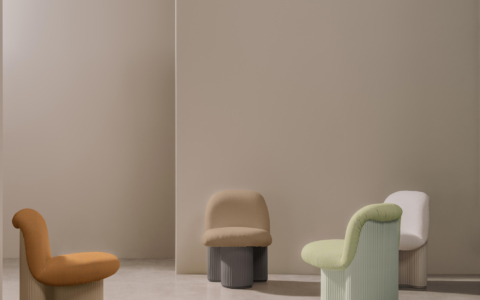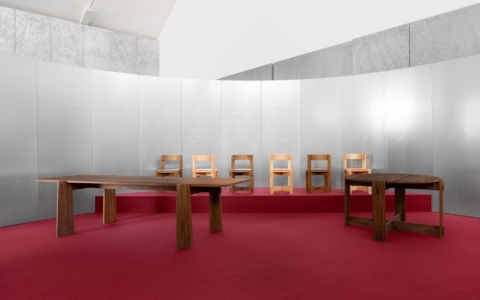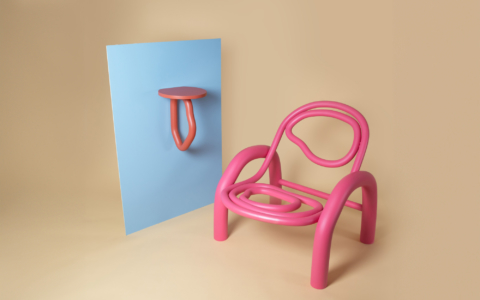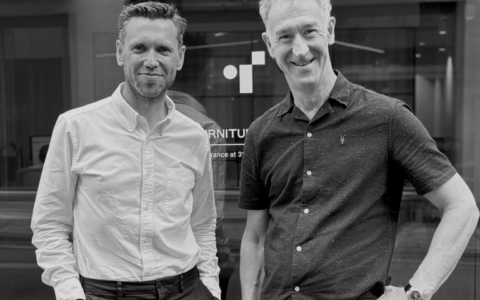Themes from 3 Days of Design 2025
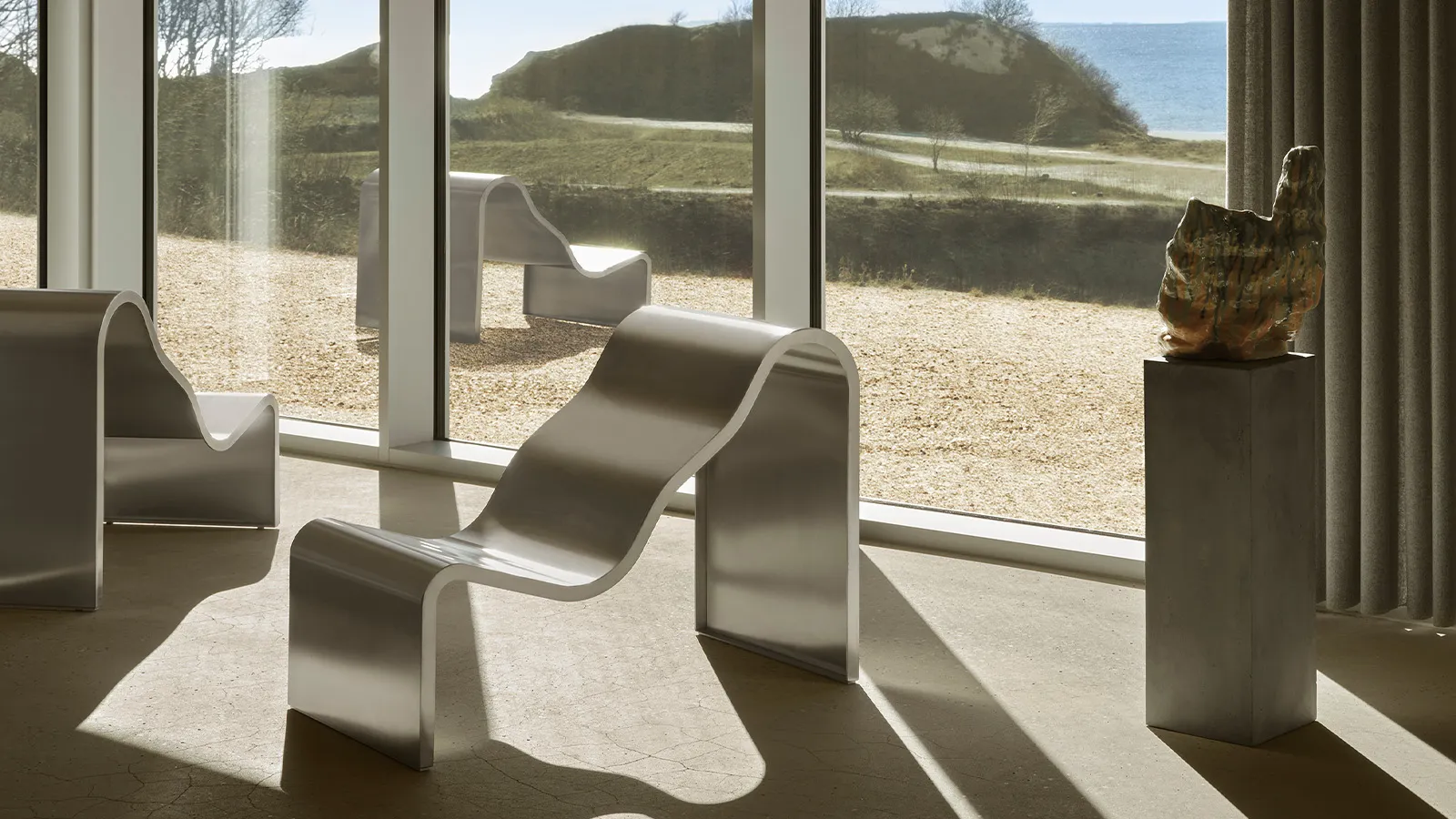
Copenhagen’s 3 Days of Design 2025, held from June 18–20, once again turned the city into a dynamic platform for global design. Under the theme Keep It Real, the festival placed authenticity, material awareness and adaptability at the forefront—spotlighting tactile finishes, modular systems, and playful silhouettes that respond to how we live now. Colour made an impact, with aubergine and baby blue used to soften volume, add contrast or define character. From recycled-plastic lighting and reissued lounge chairs to low-slung modular sofas, this year’s edition reaffirmed that Scandinavian design continues to evolve—anchored by beauty, function, and intent. Read on for the themes and highlights that stood out to us.
Colour with Character
This year’s fair saw a more expressive use of colour - applied with clarity and intent. Soft baby blues and rich burgundy and aubergine tones emerged as standout shades, bringing calm, depth and a sense of mood to sculptural forms and generous silhouettes. These hues were used to soften volume, add contrast or define character. Alongside them, dusty yellow, olive, cream and muted pinks added warmth and variation, showing how colour continues to shape tone and atmosphere without overpowering the design.
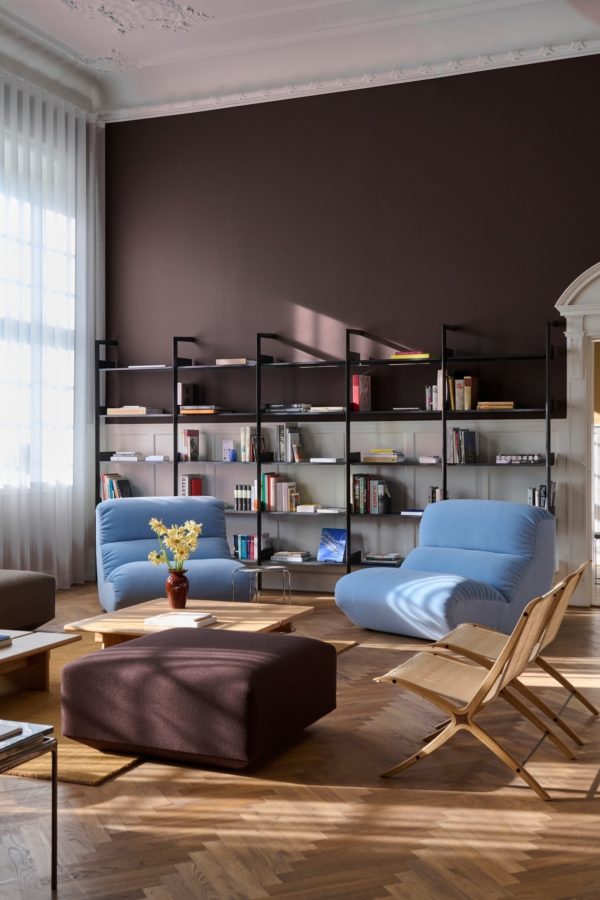
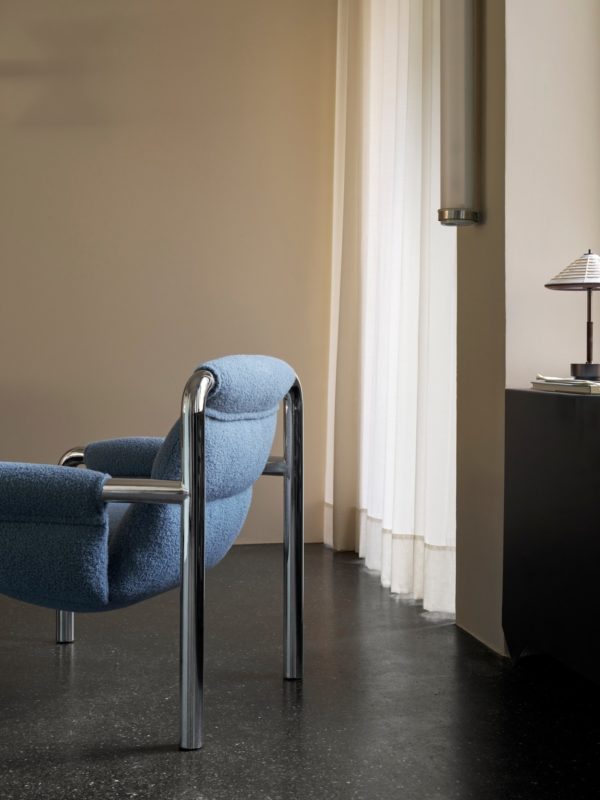
Hi Lo — &tradition
In soft blue velour, the Hi Lo series by &tradition offered a calm, tonal take on low-slung lounging. Its sculptural silhouette and enveloping cushions feel distinctly retro, but the colour palette brings a contemporary lightness.
Atli Lounge Chair — Wendelbo
Upholstered in a soft baby blue, the Atli Lounge Chair by Wendelbo brought a cooler tone to this year’s palette. Its oversized tubular steel frame and sculpted, padded form strike a confident balance between structure and softness.
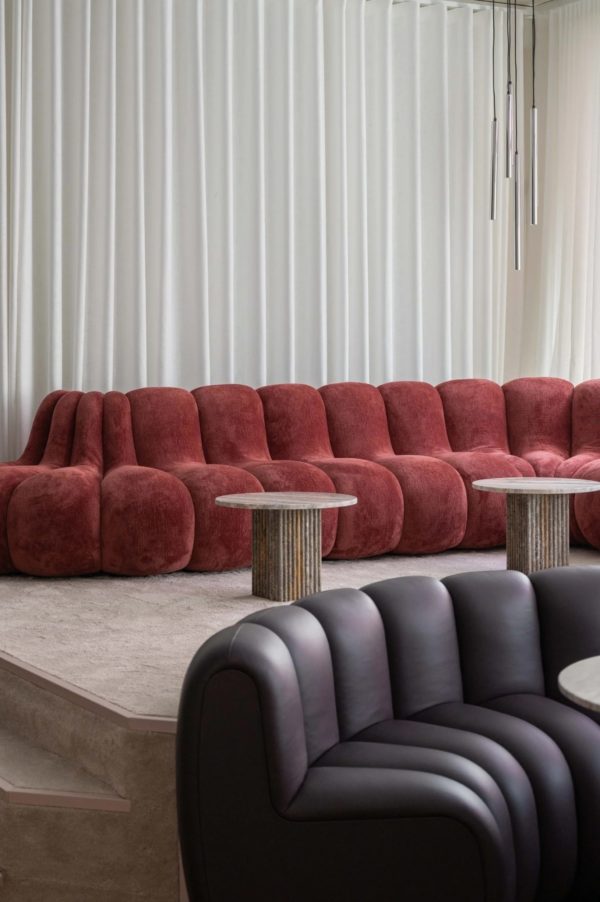
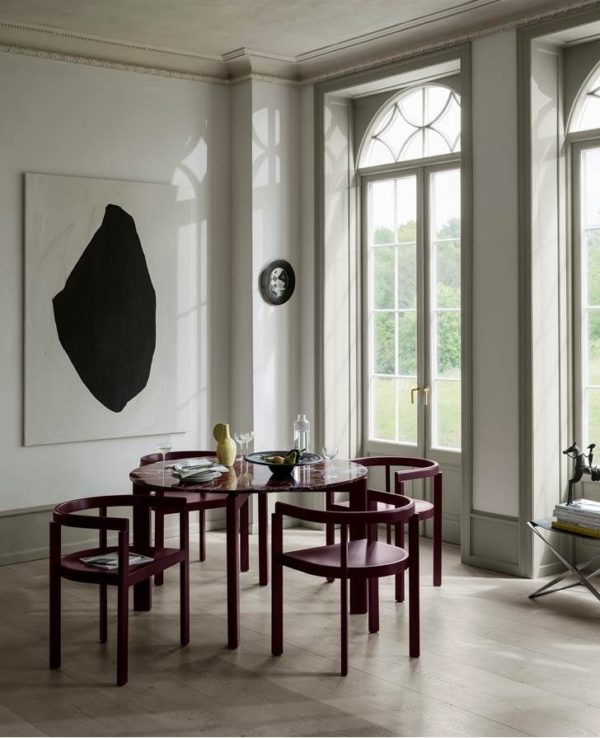
Jagger Sofa — Norr 11
Shown in a deep burgundy velvet as part of the I AM Vibrant exhibition, the Jagger Sofa by Norr 11 brought saturated colour and bold curvature into focus. Its modular form—generous in scale and softly sculpted—made a strong case for statement seating, where richness of tone is as integral as shape.
After Series — Fritz Hansen x Michael Anastassiades
Presented in deep Burgundy Lazur, the After chair by Fritz Hansen and matching table bring a rich tonal expression to the otherwise understated series—combining elegant curves in ash with a wine-hued finish and leather cushions.
1970s Design, Reimagined
A confident revival of 1970s design language could be seen across the fair. Low-slung profiles, curved edges and textured upholstery were reinterpreted with clean detailing and updated materials. Designers focused on comfort and sociability, using bold forms and warm finishes to create furniture that feels familiar but refined. Some pieces were faithful reissues from the archive, while others offered a more subtle reference—proving that the era’s relaxed, characterful approach to living still has relevance today.
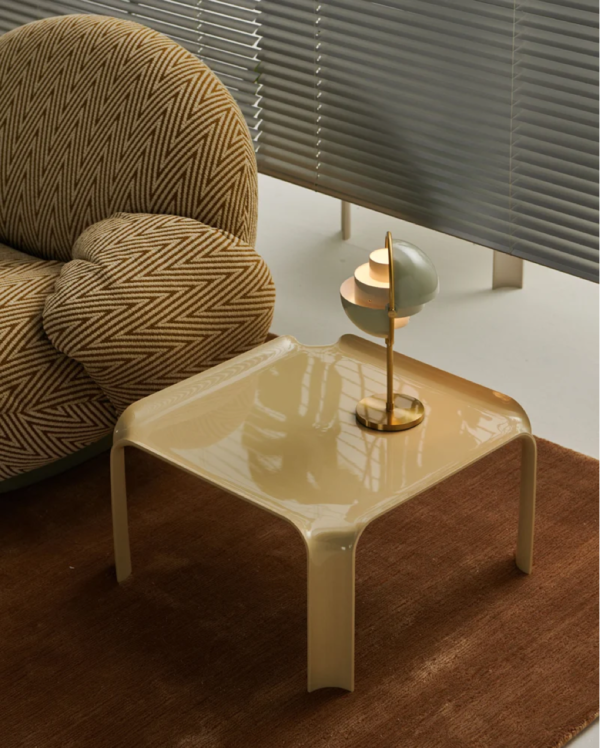
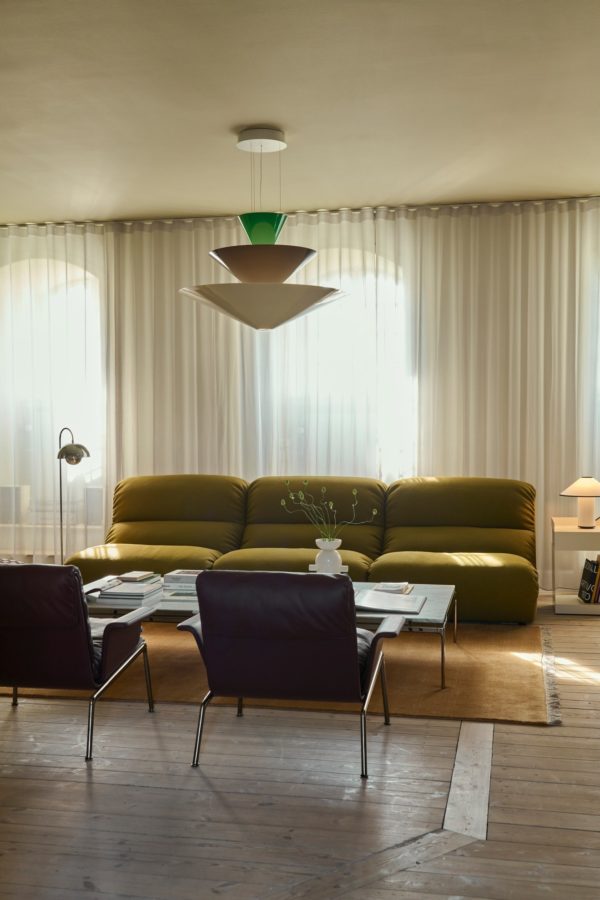
T877 Side Table — Gubi
A quiet standout from the fair, the T877 by Gubi revives Paulin’s 1970s vision with sculptural ease. Originally designed to pair with his F300 lounge chair, it captures the decade’s fascination with fluid form and futuristic materials. Now reissued in HiREK® ®—a polymer made from recycled plastic waste, and finished in softly nostalgic tones, it brings retro elegance into sharp, contemporary focus.
Hi Lo — &tradition
Referencing the sunken lounges of the 1970s, Hi Lo by &tradition is all about softness and sociability. Low, sculptural forms are paired with velour and bouclé upholstery, creating an inviting sense of ease. It’s a contemporary take on communal lounging—designed for slower moments and shared spaces.
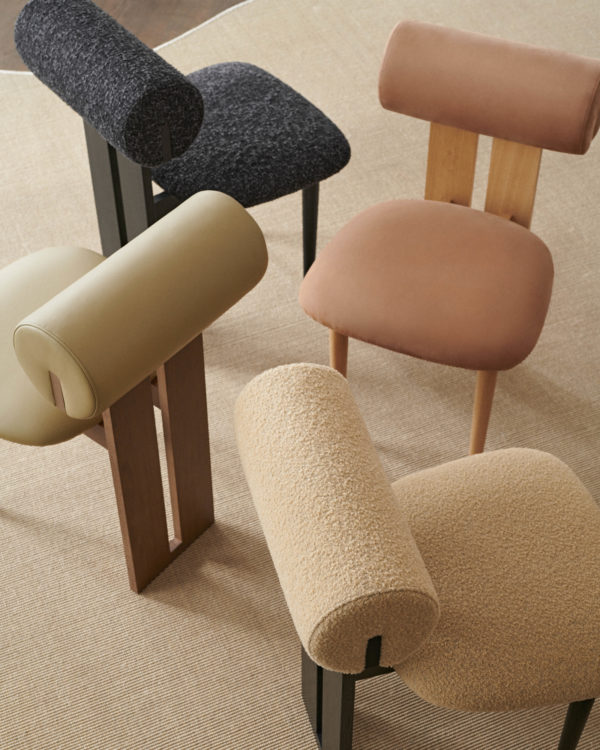
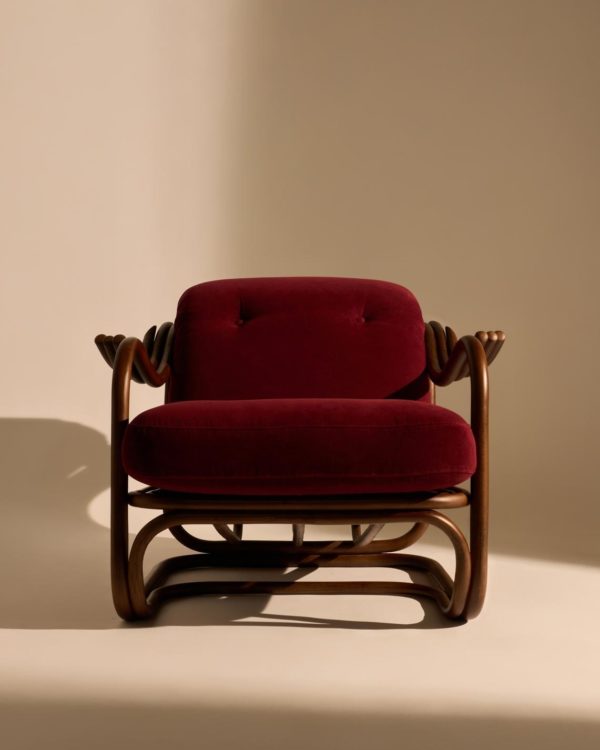
Hippo Chair — Norr 11
Soft-edged and oversized, the Hippo Chair by Norr 11 brings a playful take on 1970s form language. Its pillowy silhouette invites relaxed, informal seating, while a bold wooden leg structure adds graphic contrast. Confident in scale and generous in spirit, it’s a piece that makes space for both comfort and personality.
Poltrona Tria — Gubi
Low-slung and generously curved, the Tria Lounge Chair blends sculptural lines with inviting texture. Originally conceived by Lina Bo Bardi in 1948, Gubi's new edition brings it into dialogue with the 1970s—pairing solid walnut arms with soft upholstery in a combination that feels both assured and refined.
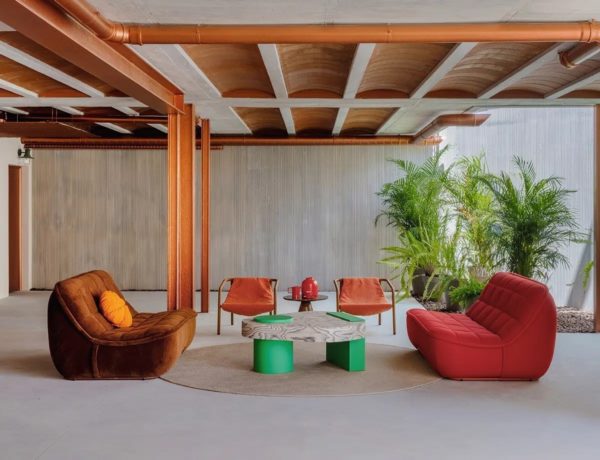
Vibe — Sancal
With quilted upholstery and curving modular forms, Vibe draws on Sancal’s 1970s roots. A lacquered wavy frame gives structure to its softness, while removable covers and smart configuration nod to contemporary needs. Relaxed but intentional, it brings a sense of ease to both public and private spaces.
Built to Adapt and Last
Adaptability and longevity were recurring priorities across the fair. Designers presented modular furniture, removable covers, replaceable components and construction methods that support repair and reuse. These features reflect a shift toward more responsible design thinking, where flexibility and long-term use are part of the brief. The result is furniture that can evolve with changing needs while maintaining a clear sense of quality and intent.
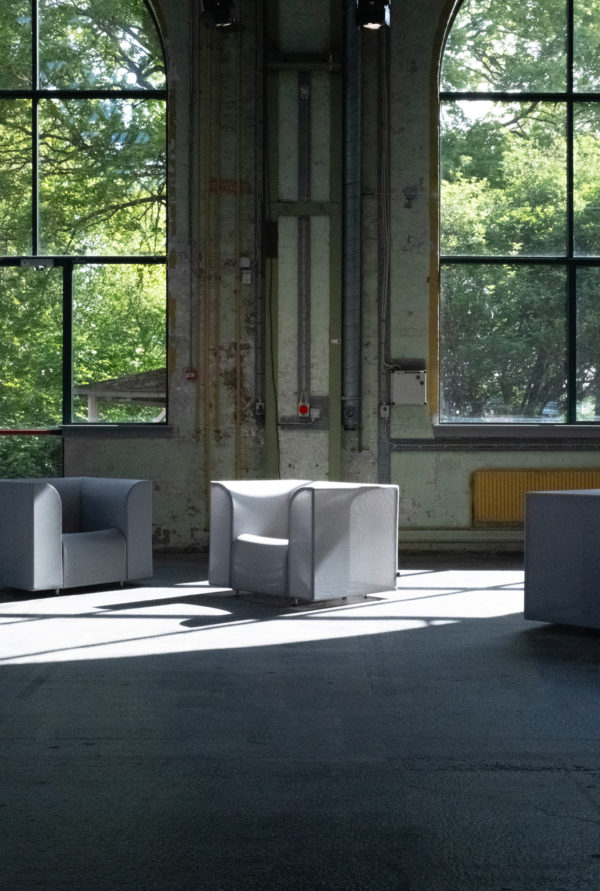
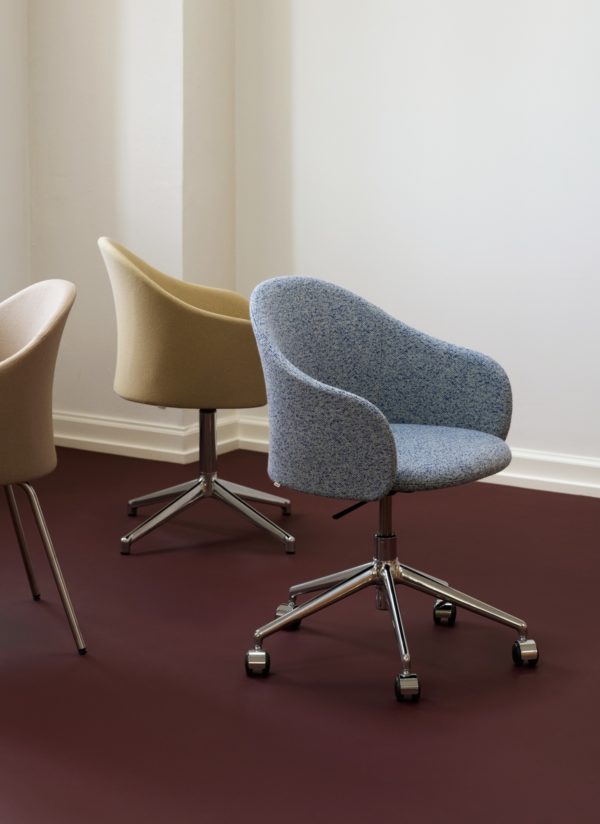
SHRINX Lounge Chair — +Halle
Developed with textile innovators Krall+Roth, SHRINX by +Halle challenges what a club chair can be—visually, structurally, and materially. Instead of traditional upholstery, fabric is heat-shrunk over a steel frame, eliminating the need for foam and reducing excess. The result is sculptural but light, generous in scale yet easy to move.
Gomo Armchair — Fredericia
Considered in both design and construction, Gomo by Fredericia brings a quiet clarity to modular living. With removable covers, replaceable foam inserts and a simple wooden frame, it’s designed to be to easily updated, repaired and reconfigured over time. Every detail is considered—practical, precise, and quietly enduring.
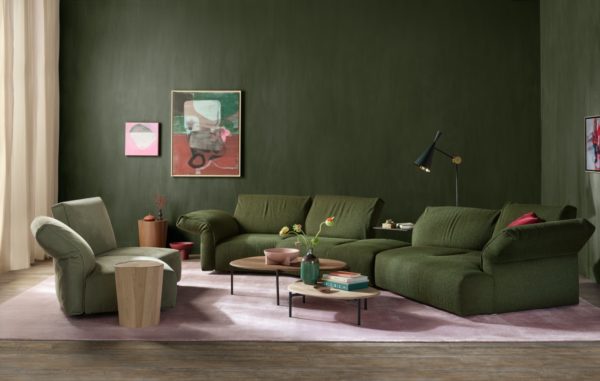
Molamisa — Walter Knoll
Designed for movement and interaction, Molamisa by Walter Knoll offers a modular, lounge-like experience where elements shift from open to intimate with a change in backrest position. Its removable covers and reduced foam interior reflect a lighter approach to upholstery, without sacrificing the sense of warmth and tactility that makes it such a compelling centrepiece.
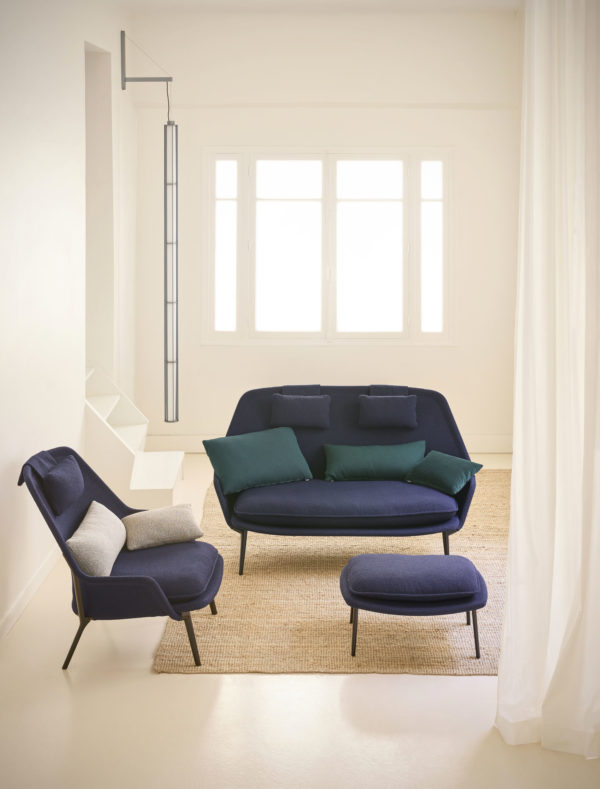
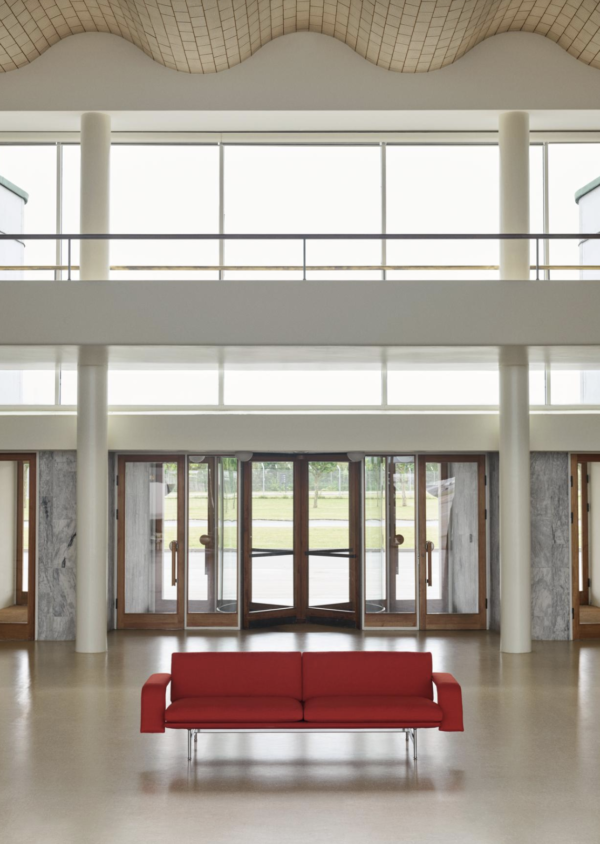
Slow Chair — Vitra
Vitra revisits the Slow series with a new bouclé-upholstered chair and a compact sofa. Designed by Ronan and Erwan Bouroullec, both pieces use a tensioned textile sling over a steel frame to deliver comfort without bulk. Light, flexible and quietly composed, they adapt easily to changing spaces and shifting needs.
Meantime — &tradition
Inspired by transitional spaces—waiting areas, in-between moments—Meantime by &tradition is designed to evolve with its setting. Soft, sculptural forms are wrapped in removable upholstery for easy care, while its grounded silhouette and balanced proportions bring a quiet sense of composure.
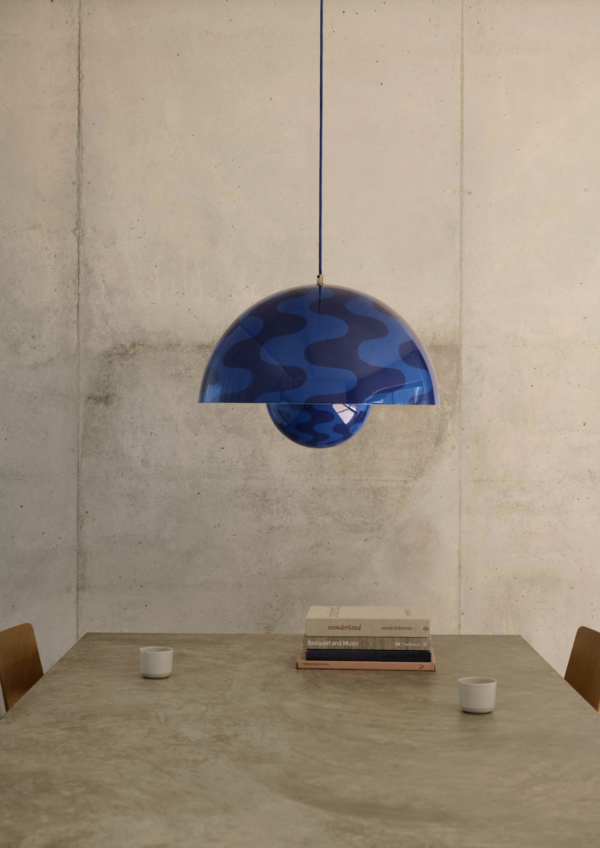
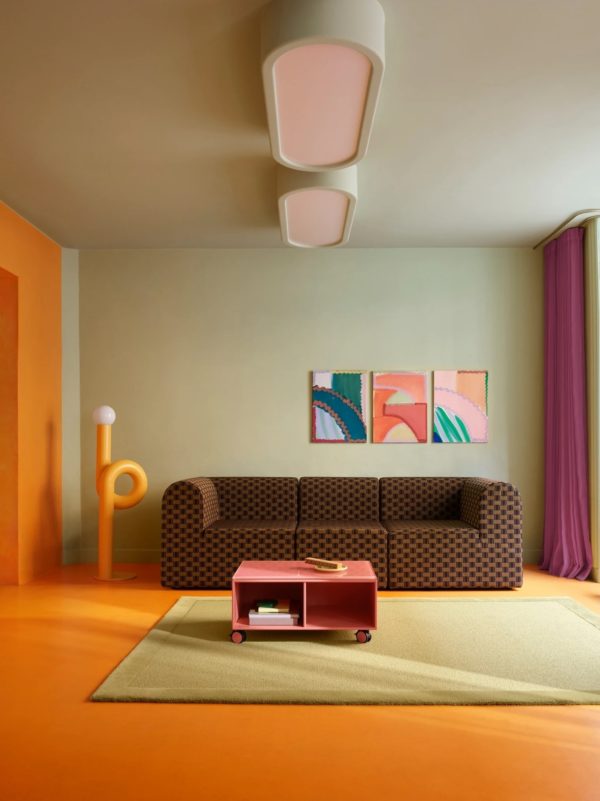
Flowerpot Light — &tradition
An icon reimagined, the Flowerpot Light by &tradition now arrives fully disassemblable—no glue, no fuss. Every part is replaceable, recyclable, and thoughtfully engineered for circularity. A considered update that honours the original design, while making it fit for the future.
Paradigm — Montana
Originally designed by Erik Rasmussen in 1969, Paradigm by Montana returns with its modular form intact, now updated with velcro-fixed covers and recyclable materials. The reissue stays true to its original character while quietly adapting to contemporary needs.
Joyful Forms
Playful design was used thoughtfully—bringing movement, character and interaction into everyday furniture. Designers explored how bold shapes, graphic textiles and unexpected details can create a more engaging user experience. From soft modular poufs to kinetic seating and colour-led materials, these pieces invited use—and reuse—in a way that felt open, generous and deliberate.

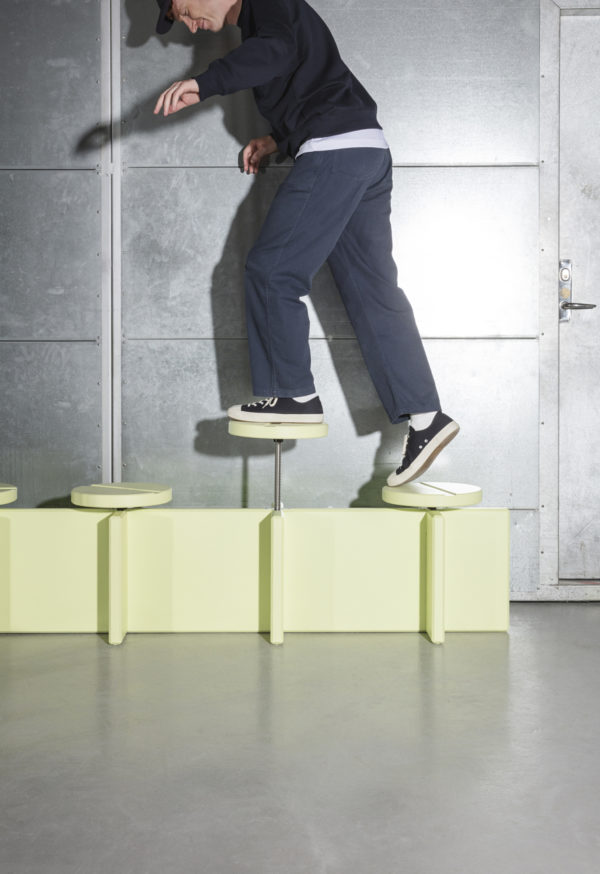
Palma — Hem
Designed by Kusheda Mensah, Palma by Hem transforms the pouf into something bold and interactive. Each modular unit—shaped like oversized fingers—encourages informal, flexible gathering, turning a simple seat into a social gesture. Covered in tactile bouclé and leather, the pieces are playful by nature, inviting movement, closeness, and a sense of fun that feels both generous and deliberate.
ADP — +Halle
Short for Adults Don’t Play, ADP by +Halle makes its case with movement. Designed by Copenhagen studio Spacon, this hybrid bench features swivelling, drum-like stools that shift between seat and surface—inviting users to twist, perch, and reconfigure the space as they go. Playful and low-key rebellious, it brings energy and curiosity into the public realm.
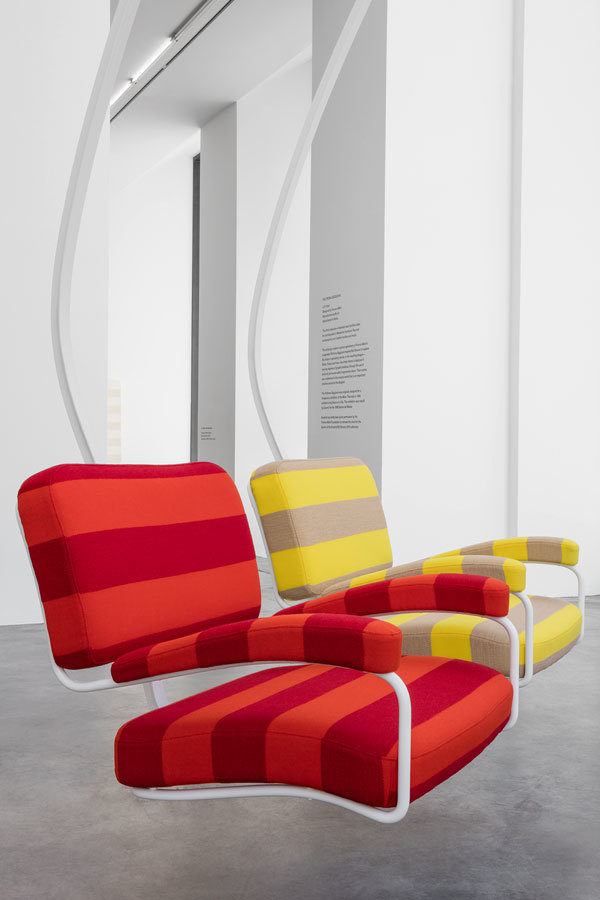
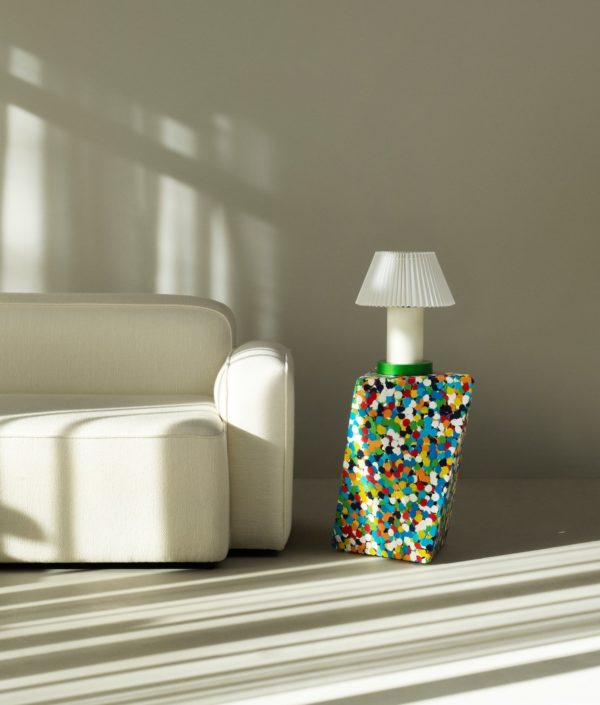
Reflex — Kvadrat
Playful textiles were a standout theme this year, and Kvadrat’s Reflex captured it best. Designed by Raf Simons, the bold jacquard features raised wool stripes that add rhythm, texture and colour. Graphic and tactile, it brings instant energy to even the most restrained forms.
Delta Proust — Normann Copenhagen
Like a confetti explosion frozen in time, the Delta Proust Side Table by Normann Copenhagen celebrates recycled material with maximum flair. Crafted from 98% post-industrial polyethylene and coloured with Alessandro Mendini’s iconic pixelated Proust pattern, each table is unique. Designed for indoor and outdoor use, it’s not just sustainable—it’s irresistibly fun, showing how circular design can be a canvas for colour, chaos, and character.
Material Futures
From chairs and lighting to bins and benches, designers explored how material choices shape both meaning and experience. This year’s standout pieces championed sustainable, tactile, and often surprising materials—whether drawn from nature, reimagined from waste, or innovated through technology. Together, they signalled a shift: materiality is no longer secondary—it’s central to how we design and live.
F46 — AOT Studio
F46 by AOT Studio turns discarded medical vials into light. Made by melting and shaping repurposed plastic into sculptural forms, these one-off lamps are equal parts science experiment and design object. The process is hands-on—no moulds, just heat and human intervention—making each piece a celebration of imperfection, craft, and material second lives.
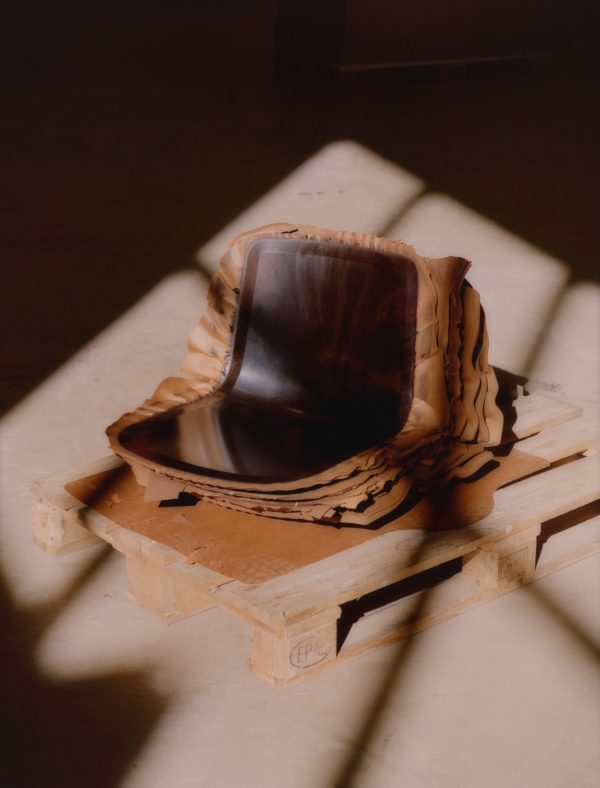
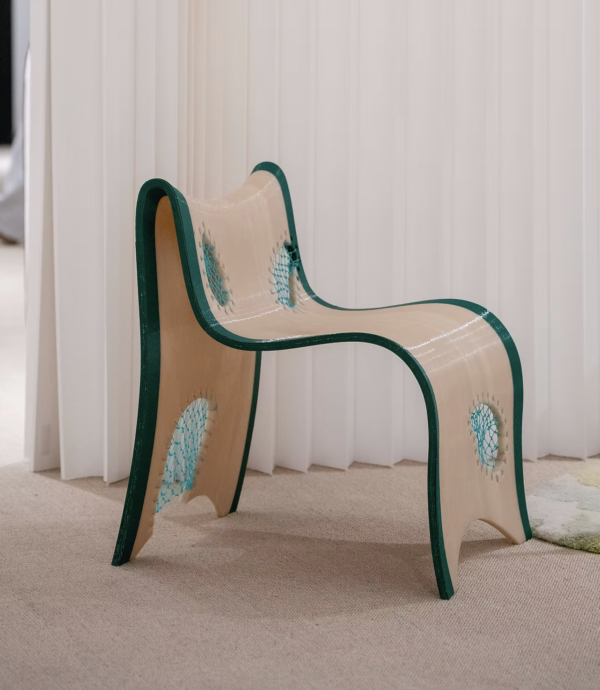
Pato Paper Chair — Fredericia
The familiar Pato by Fredericia gets a material reboot in PaperShell, a 100% bio-based composite made from cellulose. It’s a quiet evolution, but a meaningful one: fossil-free, stackable, and designed to meet the performance needs of commercial spaces without sacrificing sustainability or comfort. In its simplicity lies its strength.
Patch Chair — Patch Design
3D-printed from recycled plastic and finished with hand-woven details, the Patch Chair by Patch Design is a bold example of hybrid craft. Shown as part of the Material Matters exhibition, the precision of digital production meets the irregularity of the human hand, resulting in a piece that is both materially inventive and emotionally resonant.
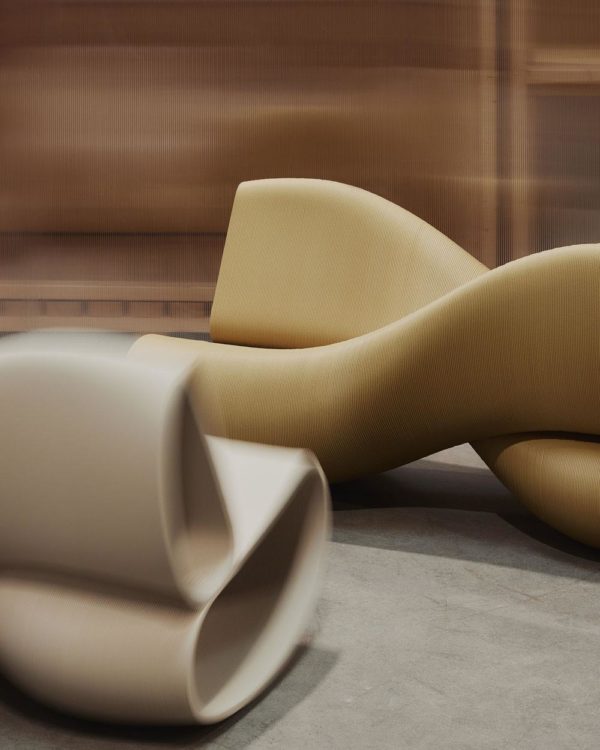
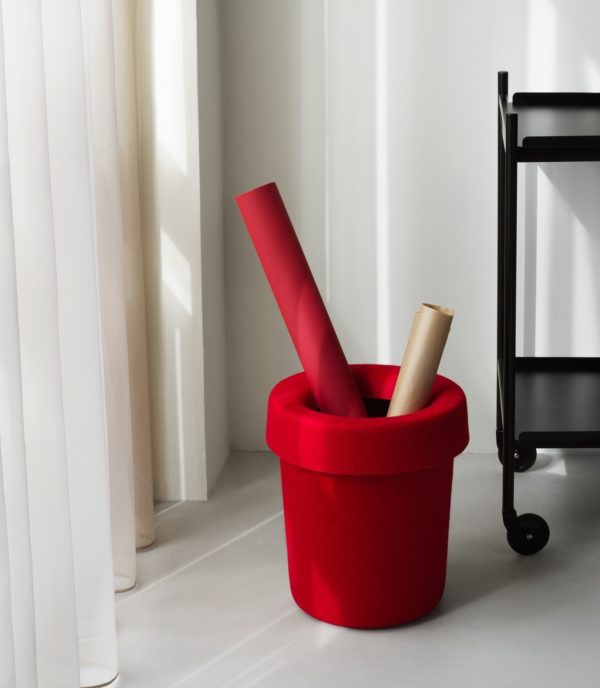
X Bench — The New Raw
Part seating, part sculpture, the X Bench by The New Raw was also featured in Material Matters, highlighting the circular potential of 3D printing. Made entirely from plastic waste, its bold X-shaped form explores balance, proportion and a clear design ethos: sustainability as structure, not surface.
Hide Bin — Normann Copenhagen
Crafted from PET felt made from post-consumer plastic bottles, the Hide Office Bin by Normann Copenhagen is proof that even the most mundane objects can have material intelligence. Designed by Simon Legald, it combines minimalist form with hidden function—discreetly housing waste, while quietly celebrating circular design. A small gesture with big implications.
We hope you enjoyed our highlights from this years' 3 Days of Design, for more information, please get in touch via our contact page.
TFP Journal
See moreExplore More
